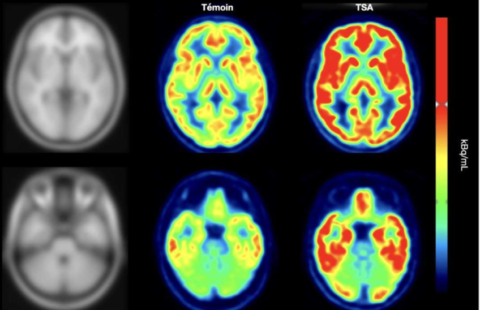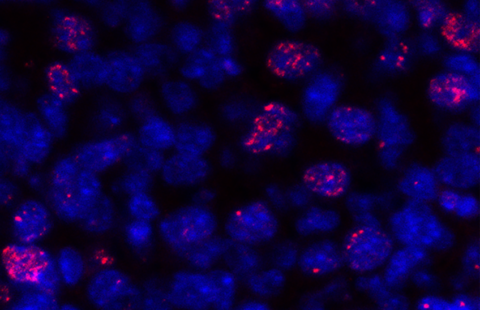And if a simple oxygen mask were to protect people from neurological sequelae following an acute stroke? It would be sufficient to administer it to patients during the interval needed by medical teams to restore the blood supply, and hence oxygen, to the brain. At any rate, this is the hypothesis formulated by Jean-Claude Baron, Inserm Research Director at Unit 894, “Psychiatry and Neurosciences Research Center,” in collaboration with English and German researchers. Work done in animals so far shows that this very simple intervention almost completely prevents neuronal loss, and completely prevents sensorimotor deficits following a stroke.
Results of this work are published in Brain.
(c) Fotolia
A cerebrovascular accident (CVA), commonly known as a stroke, corresponds to the blockage or rupture of a vessel carrying blood, and hence oxygen, to the brain. It is an absolute medical emergency, which requires calling the emergency medical services, SAMU (15), or the European emergency number (112) for immediate intervention.[1] Despite the spectacular development in the last 20 years of treatments for restoring blood circulation after acute blockage of a cerebral artery (the commonest form of stroke, known as “ischaemic stroke”), and hence restoring the oxygen supply to the brain as soon as possible after the onset of symptoms, stroke remains a major cause of disability. The most common and disabling sequelae are hemiplegia (paralysis of the left or right side of the body) and aphasia (impairment of spoken or written language, affecting expression and understanding.).
Although the current treatments often succeed in unblocking the vessels and saving the still-viable brain tissues, they cannot save tissues that are already damaged. Moreover, a tissue lacking oxygen, but still viable, becomes rapidly necrotic if blood circulation is not restored urgently. Furthermore, more minor types of stroke, such as transitory ischaemic attacks (TIA), are not indications for these treatments, because the circulation becomes re-established spontaneously, leading to good spontaneous recovery. However, these mini-strokes also cause brain damage. A major objective pursued by physicians and researchers is therefore, in all cases, to protect the still-viable tissue until it can be reperfused and hence reoxygenated.
The mouse model of stroke is considered a good representation of the clinical situation in humans. In this work, the research group led by Jean-Claude Baron tested the hypothesis that normobaric oxygen therapy (100% oxygen delivered by a simple face-mask) prevents the development of brain damage in a model mimicking stroke with early spontaneous reperfusion.
The researchers showed that this very simple treatment almost completely prevents neuronal loss and tissue inflammation in these animals, and completely prevents sensorimotor deficits following brain ischaemia.
For Jean-Claude Baron, Inserm Research Director and neurologist attached to Sainte-Anne Hospital: “This work is also highly valuable for its application to the human situation, as the treatment consists of a simple oxygen bottle and a light facial mask. This treatment would thus be very easy to implement in patients with stroke, as soon as they are being transported by ambulance.
It could also conceivably be started at home, prior to the arrival of the emergency services, in patients with a high risk of stroke, by providing minimal training to the patient and his/her spouse,” he adds.
If the clinical value of this easily implemented and inexpensive treatment is later proved by the appropriate randomised trials, it will be possible to both improve the efficacy of treatment and reduce brain damage following TIA/minor stroke, and thereby reduce disability.
[1] Source: inserm.fr


